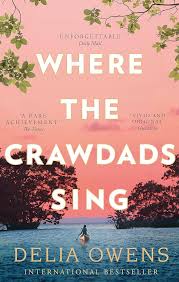47. The Expert
byThe Expert, in the 1970 courtroom, was Prosecutor Eric Chastain, who vigorously questioned Sheriff Jackson regarding the circumstances surrounding the discovery of Chase Andrews’ body at the base of the fire tower. Chastain’s approach was to suggest foul play, pointing out the lack of footprints or any substantial evidence that could explain how Chase had ended up at the base of the tower. The absence of fingerprints or any other definitive clues near the scene was a crucial element in his argument, but Chastain also highlighted the red wool fibers found on Chase’s clothing, which appeared to match fibers from Miss Clark’s hat. This seemingly minor detail was used to try and build a narrative that connected Kya to the crime scene, suggesting that she was somehow involved in Chase’s death. However, despite these circumstantial pieces of evidence, the prosecutor’s argument lacked the solid foundation of direct proof that would truly tie Kya to the alleged murder.
Tom Milton, the defense attorney representing Kya, immediately countered the prosecution’s theory with a pointed and logical rebuttal. Milton challenged the assumption that the lack of footprints near the fire tower was a deliberate attempt to erase evidence of a crime. Instead, he proposed that natural tidal movements could have easily swept away any traces, including footprints that might have been left by either Chase or anyone else present at the scene. This introduced a plausible alternative explanation that allowed the jury to reconsider the scene without jumping to conclusions about intentional foul play. Milton’s argument was clear—there was no definitive evidence to suggest Kya’s presence at the fire tower on the night of Chase’s death. The absence of Miss Clark’s fingerprints, hair, or any other physical proof that she had been at the crime scene made it increasingly difficult to support the claim that she had been involved in the murder.
Further weakening the prosecution’s case, Milton scrutinized Sheriff Jackson’s investigative methods and pointed out several flaws in the way the investigation had been conducted. He noted that the fire tower grates were routinely left open, a fact that was widely known among locals, and often by children who had no connection to the crime. Milton emphasized that the prosecutor’s assumption that the open grates were evidence of something sinister was, in fact, unfounded, as there were regular, innocent explanations for the condition of the tower that night. This served to discredit the prosecution’s narrative, which relied on a series of assumptions rather than clear and irrefutable evidence. Milton’s strategy was to expose the prosecution’s case as speculative and based on unreliable inferences. By questioning the sheriff’s expertise and his ability to conduct a thorough investigation, Milton cast serious doubt on the integrity of the case against Kya, showing the jury that many of the supposed connections between Kya and the crime were weak and unsupported by the facts.
The exchange in the courtroom revealed the broader theme of the trial: the fragility of circumstantial evidence and the tendency to form narratives based on incomplete or selective facts. Milton’s cross-examination of Sheriff Jackson effectively highlighted how easy it is for assumptions and biases to influence legal proceedings, particularly when there is an absence of concrete proof. The defense was successful in turning the tide of the trial, forcing the jury to consider whether the prosecution’s case was truly as airtight as it appeared or whether it relied more on circumstantial details and presumptions. Milton’s argument also underscored the broader issue of societal bias, as Kya, the isolated girl from the marsh, was being scrutinized under a lens that assumed guilt based on her background rather than actual evidence. His ability to dissect the weaknesses in the prosecution’s case not only helped to defend Kya but also drew attention to the flaws in how the investigation had been handled, urging the jury to focus on the lack of concrete evidence tying her to the crime. This chapter became a critical turning point, showcasing the complexities of legal defense and the importance of scrutinizing every piece of evidence presented in a case.


